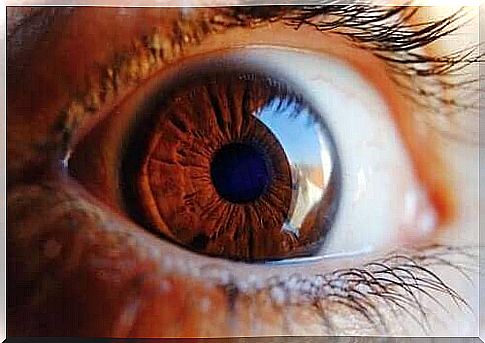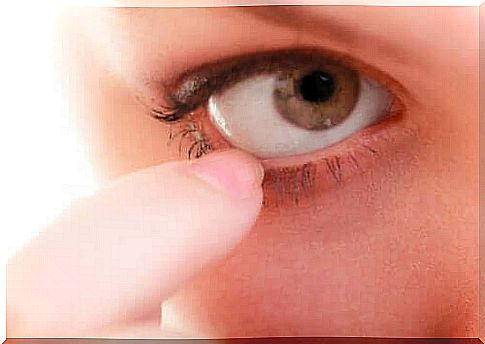Discover How The Eye Cleans Itself

Through experiments on mice, scientists have discovered how the eye cleans itself using a toxin removal system. What this discovery revealed is that this self-cleaning mechanism is similar to the drainage mechanism used by the brain.
Similarly, other organs also have techniques to remove toxins and protect themselves. The brain is one of the best known. Its research even offers hope for the treatment and prevention of Parkinson’s and Alzheimer’s disease.
The journal Science Translational Medicine published a new article on the eye. In it, the authors explain that knowing how the eye cleans itself is another step in understanding glaucoma. You may not know it, but glaucoma can lead to blindness.
The new study on how the eye cleans itself
The above-mentioned study was conducted on mice because of the similarity of their ocular structure. The scientists injected them with a substance to detect it and find out how the eye removed it.
This is how they discovered the existence of an alternative route to traditional drainage routes. That is, we already know that the eye uses the lymphatic system, like many other organs, to eliminate waste. However, this is a different mechanism.
Scientists have observed how amyloid substances leave the eyeball through an internal channel called AQP4 (aquaporin-4). This aquaporin is the same one that other researchers discovered in the human brain a while ago.
In addition to observing how the eye cleans itself, the researchers devised several scenarios in which they check whether drainage increases or decreases. They performed several tests, some involving direct exposure to light on the retina, while others involved an atropine injection.
Finally, they compared normal eyeballs and eyeballs to glaucoma. What they found was a direct application of this discovery, as the mice with glaucoma showed a change in their drainage system.
What Happens to Glaucoma?

Glaucoma is a disease characterized by increased intraocular pressure. One can measure this pressure and this measurement provides a conventional value for the force exerted by the aqueous humor of the eyeball.
In normal situations, the aqueous humor in the eye happens right there and circulates until it drains and exits the orbital system. This flow is constant and ensures that the liquid is free of toxic substances that would otherwise damage the sight.
When for some reason there is no good drainage of the aqueous humor, the intraocular pressure builds up and increases. It can also produce more than the system can drain and so the end result is the same.
People with glaucoma notice that vision gradually decreases. They therefore consult an ophthalmologist, who measures intraocular pressure, makes a diagnosis and explains which therapeutic options to consider.
You may be able to prevent glaucoma by reading the scientific study we discuss here on how the eye cleans itself. Early detection of a drainage error can improve aqueous humor circulation.
The cleansing system of the brain

When a doctor diagnoses glaucoma, they also explain the different therapeutic options for dealing with it. This new discovery is related to the brain’s cleansing system that a research group discovered years ago.
The lymphatic system is so named because it acts like lymph but is mediated by glial cells of the nervous system. The traditional lymphatic system that cleans the organs is present in the brain as well as in the eye, but it removes toxins slowly.
However, these lymphatic systems are faster and more specialized. This is why they deal with specific toxins. The eye and brain must have lymphatic systems, as they are organs of high metabolism. This means that their cells operate at a high speed and therefore produce a lot of waste that would otherwise accumulate.
In the case of the brain, the system regulates through pulse and heart rate, as well as through sleep. During the night, certain movements of contraction and expansion begin to cleanse the brain tissue and remove the waste.
The impact of knowing how the eye cleans itself
The above researchers have linked their discovery to glaucoma. However, future research is needed to keep moving forward, but it is promising to know how the eye cleans itself.
In fact, they would have a solution before glaucoma starts to damage vision if it were possible to identify faults in the lymphatic system early. This is because it would save millions of people with this disease from problems because they would get a timely diagnosis.









